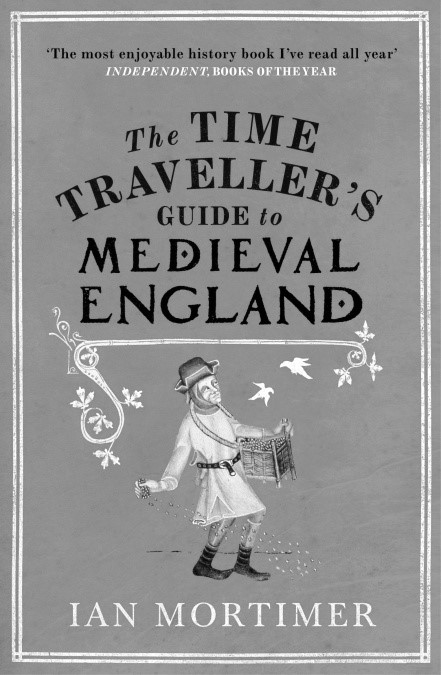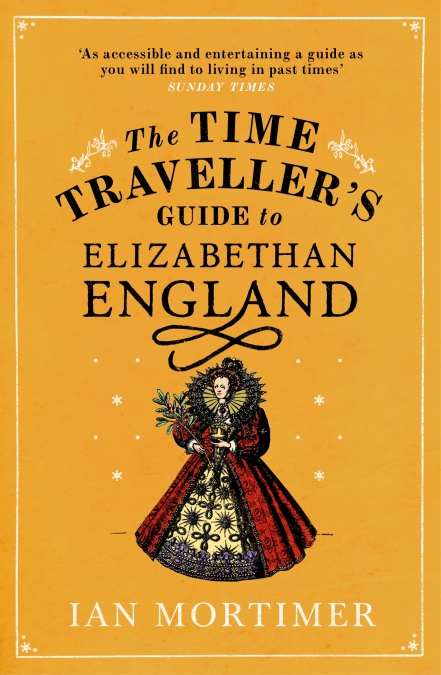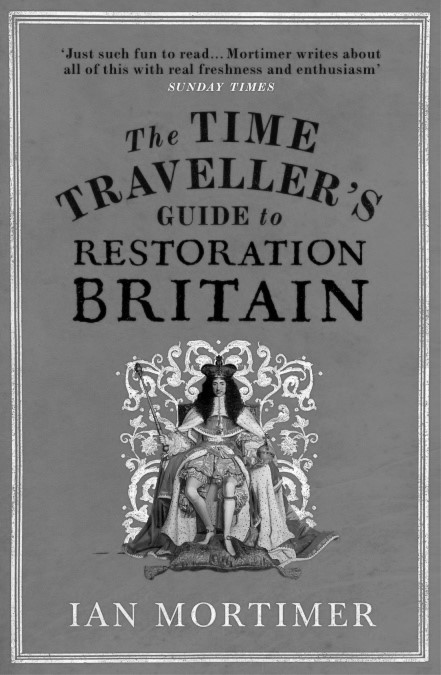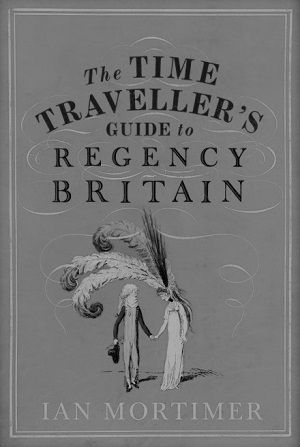|
The Two Elizabethan Englands Which queen of England came to the throne at the age of twenty-five, and lived longer than any previous English monarch? A clue: she assumed the titles 'Supreme Governor of the Church of England' and 'Defender of the Faith' but despite this, and even though the great majority of her subjects remained loyal to her, her reign saw many people express the most profound religious doubts, and a minority took up arms against her in the name of religion. As queen she travelled widely and, in her name, the national flag was planted in remote corners of the globe. She witnessed a revolution in popular music, and saw architectural innovation in buildings that soared higher than before and made use of huge expanses of glass. Several of her subjects transformed English literature. In London, housing pressures were extreme, with many immigrants coming from the Continent. Under her governments, politicians grappled with the concept of an independent Scotland, there was a resurgence of the Welsh language, and English troops were sent to Ireland. The nation also fought a series of short overseas conflicts, which included (in the 31st year of her reign), sending a great war fleet against a Spanish-speaking state, for the sake of increased influence in the Atlantic... As you probably realise, the foregoing is carefully worded to apply equally to the reigns of both Elizabeth I and Elizabeth II. Those old enough can probably remember the comparisons with Elizabeth I at the accession of the present queen, as people looked forward to a new political, cultural and economic golden age. And in some ways that optimism was justified. The first Queen Elizabeth conducted her progresses around the country and had lands claimed for her in the New World: she had Sir Walter Raleigh and Sir Francis Drake. The present Queen Elizabeth has travelled the globe; her reign saw the successful conquest of Everest and Sir Ranulph Fiennes's achievements. Elizabeth I's reign saw the tremendous outpouring of popular music in the 1590s, as English composers sought to outdo each other with the production of a stream of madrigals and airs; in the 1960s, Lennon & McCartney, Jagger & Richards took the places of John Dowland, Thomas Morley, John Wilby and Thomas Weelkes. The greatest writer of Elizabeth I's reign was of course Shakespeare, supported by Marlowe, Jonson, Sidney and Spenser. In the last sixty years, it would be hard to deny that, of all English citizens, TS Eliot's influence has been the most profound, with Ted Hughes, Harold Pinter and Seamus Heaney all following. The English Armada (launched the year after the Spanish one) and the Task Force sent to the Falklands both occurred in the 31st year of their respective sovereigns' reigns. Both were concerned with preserving English influence in the Atlantic, the former (unsuccessfully) in the Azores, the latter in the Falklands. To a certain extent this is just historical train spotting, looking for coincidences across time and noting them down. Some of them are pleasing nonetheless: Thomas Weelkes's drunken bad behaviour could be pure rock'n'roll. But there are more profound things to be learned from a comparison of the two reigns. One may note the obvious point: many social aspects that we associate with our own time have a much longer pedigree - what Radio Four describes as 'the Long View'. Take population expansion, for example: this was no less important a matter for sixteenth century commentators than it is today: even though the population of England was only about four million - about 8% of its present day total. Many writers bewailed the increased number of people in every town in the 1590s. Building new houses on the 'green belt' was a touchy subject even then, when the 'green belt' started at Drury Lane. Good Queen Bess herself prohibited further extensions of the suburbs. As a result, the huge numbers that flocked into the city caused buildings to become higher - five, six or even seven storeys - and standards of living within them declined. Londoners complained at the number of new-fangled coaches on the roads, and the accidents they caused. Throughout the country people were deeply distrustful of immigrants from the Continent but tolerated them on account of the fact that they were refugees from hostile regimes. Those immigrants, however, introduced new forms of garden farming and starching ruffs. You cannot help but conclude that perceptions of overcrowding are relative, and natives' suspicions of large numbers of refugees are natural and never easily overcome, even when the incomers bring cultural benefits with them. Taking the Long View of technological change between the two reigns is similarly revealing. Both reigns saw unprecedented technological and scientific development. In the sixteenth century science was called 'natural philosophy' and, before Elizabeth's accession in 1558, it was a relatively slow-changing body of knowledge. But the English, who in 1550 had been playing catch-up with the Spanish and Portuguese, had become the world leaders by 1600. The appearance of a new comet in 1572 and the spread of Copernican ideas caused natural philosophers like Dr John Dee and Thomas Digges to make advances in mathematics and astronomy. An Englishman, Thomas Harriot, depicted the surface of the moon - as viewed through a telescope - before Galileo. And it was an Englishman, William Gilbert, the father of the study of magnetism, who made experiments with an unseen force that he named 'electricitas' and established (among other things) that the Earth is itself a magnet and outer space is a vacuum. When people discuss 'change' today very often they mean technological change - and the period when our thinkers first became obsessed with technological development was the first Elizabeth's reign. The interesting thing is that the shift from natural philosophy to modern science is not the triumph of rationalism over darkness and superstition. As natural philosophy made advances under Elizabeth I, so too did religion and the study of the occult. Action against witches increased in her reign as well as scientific knowledge. Many scientific experiments were made for religious reasons - men wanted to learn more of the secrets of God's world. If God made diseases, then He must have made the antidotes too - it was just a matter of finding them. Scientific discoveries were a by-product of religious enthusiasm: the great herbals of the late sixteenth century are just one result. Elizabeth II's reign has seen just as ardent a quest to discover the secrets of nature but some of our scientists (Richard Dawkins obviously springs to mind) have set themselves up as public opponents of religion. Today science and religion are poles apart. But Elizabethan natural philosophers would have laughed at Professor Dawkins and his ilk, for they would have deemed it ridiculous to suppose that simply by exploring Creation one could determine anything about the existence of its Creator. As the relationship between religion and science shows, although the similarities between the two reigns are interesting, it is the differences that carry the most meaning. The irony is that, in 1952, when people were relishing the prospect of a new Elizabethan 'golden age', the England of 1600, which they nostalgically thought of as 'golden', was one which most of us would find dangerous, misogynistic, violent, repellent, exhausting, unhealthy and cruel. Life has changed profoundly since then. The real changes are not the cosmetic things like communications devices and forms of transport or military destruction. People communicated, travelled and killed each other quite efficiently in the past. Similarly education, bureaucracy and religious belief are all relative to their own time: education today is not necessarily any 'better' than it was in the sixteenth century, for children are taught according to the demands of the time and there are plenty of practical things a boy would be taught on a farm or through apprenticeship that we do not teach today. The most important differences are not characteristics of the ways we live our lives (matters of choice) but the very substance of society: for example, health, equality and sustainability. Health - you can hear the 'P' word coming. Plague killed a quarter of the population of London in 1563, and at various other times it wiped out 10%-25% of the population of most towns and cities. There was no cure. Influenza was almost as bad: it killed 5% of the nation in about eighteen months in 1557-9 (that is proportionally more than were killed by the influenza outbreak of 1918-19 and the First World War put together). Life expectation at birth was between 35 and 40 (today it is twice as long). The median age of the whole population was about 21; today it is 39. People had far less experience to guide them in making decisions, they were accordingly more hot-headed violent, and death was never far away from your door - whether from disease or injury. Most parents could expect to see half their children die. In malaria-infested parts of the country, like Romney Marsh, you were considered old if you lived to forty. Equality is something of a catch-all term. Hopefully it draws your attention to the fact that you have many rights in the present reign that your ancestors did not imagine, let alone enjoy. The right to vote is important, but more important is the right to eat. That did not exist in the early part of Elizabeth's reign. Married women did not have the right to own property, or the right to carry on a trade independently, or the right not to be beaten or raped by their husbands, or the right to make a will. With such wonderful portraits of the first Elizabeth all around us we tend to forget how deeply prejudiced society was against women. It was equally prejudiced against the poor, the young, the sick and the old. The differences between the 'haves' and the 'have nots' today are largely financial; in the Elizabethan period the differences were more physical. Today even the poorest five percent almost all have access to shelter, warmth, clean water, food for their children and a toilet. They can at least work for a living, and obtain some money for food. If they fall sick, they receive professional medical attention. They have the vote. In stark contrast, in the 1590s, people regularly starved to death in the streets. Women were found dead in barns, having crept there to find some place to give birth. It was against the law to offer homeless people shelter if they were not from the same parish. First they were forced out of the parish; then, unable to work, they fell into stealing to get enough money to eat. When caught, they were normally tried and hanged. Only at the end of the reign did the Poor Law start to remedy this situation. The idea that one man or woman is worth as much as any other simply did not apply in sixteenth-century society - except in the eyes of the Church. As a result, not only did you have inequality by neglect, as outlined above, you had extreme cruelty and discrimination. Torturing people in the name of the state was very much an Elizabethan innovation (not a medieval one as many people assume). Criminals were routinely killed by hanging or, in the case of treasonable women, burning at the stake. Male traitors had their guts cut out and burnt in front of their eyes prior to being killed. People refusing to plead in court were crushed to death under piles of stones. Men were expected to beat their children and servants, and masters their apprentices. The humiliation of moral offenders, such as adulterers, was common and widely approved of. Women and children who forgot their manners could expect to be flogged; slanderers could expect to have their ears sliced off in the pillory; women could be ducked on a ducking stool for simply being a scold. Some crimes involved the loss of a hand (Elizabeth I ordered a man's right hand cut off for writing a book about her possible marriage intentions - and the right hand of his publisher too). As for black people, the women tended to be used for sexual experimentation by their owners and their friends - baptism registers often record the name of the offspring's natural father as well as the name of the person to whom the mother belonged. In the first Elizabethan England, discrimination and cruelty were not just everywhere, they were widely considered good for society. Most people would agree that a society that is unsustainable is precarious, if not doomed. This brings us to the third fundamental difference between the two reigns. While each individual life was precarious under Elizabeth I, under Elizabeth II it is the whole of society that is vulnerable. In the first Elizabethan period, there was a firewood shortage as too much timber was felled; and there was a land shortage in towns as the population grew; but almost all the resources that an individual consumed were naturally replaceable. Coal was mined in small quantities but it was only used by blacksmiths, glaziers and similar craftsmen. Transport was all by horse, boat or on foot. Today, there are more than 51,000,000 people in England - thirteen times as many as there were at Elizabeth I's accession - and every single one of us directly or indirectly consumes thousands of times as much metal and coal as our sixteenth century forebears, not to mention infinitely more nuclear minerals, gas and oil. In Elizabeth I's England food was by and large produced where it was consumed. No need for expensive haulage or continent crossing flights; people made do with what they could obtain locally. Today very few parishes can provide sufficient food to sustain their parishioners. Where I live in Devon, in a rural parish of seven thousand acres, the only arable field is for cattle fodder. Nothing is farmed here but sheep and bullocks - there isn't even a single milk herd left. And that does not just apply to food: one could say the same for the production of building materials and leather products, brewing, tailoring, vehicle manufacture - all those things that a community used to supply. Specialisation has left us wholly dependent on one fossil fuel, petrol, to sustain our entire existences. We have practically laid siege to ourselves - medieval style - so that if someone were permanently to destroy the fuel distribution network across the UK they could starve us, as if we were all in a Britain-shaped castle surrounded by a large moat with not enough food. And we know that petrol and diesel will eventually run out. While most people think of change as technological - and point to the Internet and mobile phones as what principally sets us apart from the past, a far greater difference lurks in the fact that, for the first time in the history of the world, we have allowed our communities to become helpless - unable to feed themselves or even clothe themselves. Taken as a whole, with all its similarities and differences, the comparison of the two Elizabethan Englands leaves an impression of them acting as bookends. It is very difficult for us to relate to people before Elizabeth I's reign. We can see Elizabeth's face and the faces of her courtiers in pictures and we can read their thoughts in their letters and diaries; we recognise the patterns of their speech from Shakespeare and the English Bible. As for the far side of our current queen's reign, we cannot look far into the future; it is as alien as the middle ages. Nor do we dare, given the acknowledged unsustainability of our way of life. Between Elizabeth I and Elizabeth II lies almost everything we culturally share. And the two reigns serve as bookends in other ways - in terms of the rise and fall of things. It was in Elizabeth I's reign that Dr John Dee came up with the idea of the British Empire: in Elizabeth II's reign what remained of the empire was largely dismembered. In the first Elizabeth's reign we started discovering new territories and indigenous tribes; in Elizabeth II's reign we have identified the last remaining pockets that have not yet been touched by the Western World. In the sixteenth century mining for coal greatly increased; in the twentieth century it is on the way down. And as regards religion, the ardour that led to the Elizabethan Settlement of the Church in 1559 has all but fizzled out, and a number of Anglicans - some priests included - have found greater vitality in the same Church of Rome which the nation left behind in 1559. A period of time is coming to a close. The things that have remained with us from the first Elizabeth's reign will probably be with us for many centuries to come, in some form or other. The differences are quite another matter. Maintaining the advantages we enjoy over our Tudor forebears in the years to come will be quite a challenge. Doing so in a way that does not leave us helpless or running down our resources is probably the biggest problem facing us in this new millennium. |



